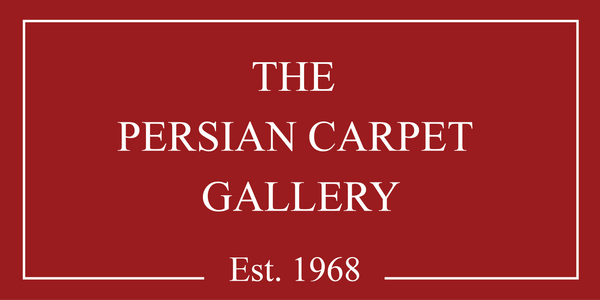History of Mashhad Carpets
The tradition of carpet weaving in Mashhad spans approximately five centuries. One of the most ancient Mashhad carpets is a prayer rug (sajjadeh) gifted by Shah Tahmasb to Sultan Suleiman the Lawgiver in 1556. Crafted in three quality tiers at the workshop of Sultan Ibrahim Mirza, son of Sam Mirza, and nephew of Shah Tahmasb, these carpets are of historical significance. Notably, a high-quality piece, believed to be one of the oldest, was housed in London until a couple of years ago and is now reportedly part of the collection of Sheikh Saud Al Thani of Qatar. Lesser-grade examples, along with some third-tier pieces, remain in the Topkapi Palace Museum.

During the 19th and 20th centuries, Mashhad carpets gained widespread popularity, not only domestically but also for export. However, the meticulous polishing of wool fibers for enhanced color absorption, while contributing to color vibrancy, unfortunately led to a shortened lifespan. This, in turn, negatively impacted the perception of Mashhad carpets, resulting in a significant decline in their export to Europe. Regrettably, surviving carpets from that period are now all susceptible to erosion.
Establishing the precise origins of carpet weaving in Mashhad, much like determining the commencement of carpet weaving in the Khorasan province, presents certain challenges. The oldest known Mashhad carpet is attributed to the Safavid era during Shah Abbas's reign. According to historical accounts, this carpet was woven on the orders of Shah Abbas for the shrine of Ali ibn Musa al-Reza in Mashhad. Arthur Cecil Edwards, in his book on Iranian carpets, delves into the background of this carpet, referencing a list found in 1302 Hijri and attributing its authenticity to narratives and traditions.

While specific documents detailing carpet weaving from the Safavid era to the early 14th century Hijri are scarce, contemporary sources may shed light on the start of modern carpet weaving in Mashhad. However, such sources may not be entirely comprehensive. One such source is the writings of the German traveler Sir Albert Houtum Schindler, who described Mashhad in 1293 Hijri, stating that its prices were comparable to the capital. This date roughly aligns with 1251 Hijri.
Physical Characteristics
Design: Mashhad carpets commonly feature Shah Abbasi floral patterns with delicate stems. Structurally, these designs closely resemble the unique styles of original Herati designs, some examples of which still exist in the current period. Today, this design approach is visible in the Isfahan Qods Rezavi Carpet Company's productions, especially in scattered (all-over) designs, as well as Lachak and Toranj patterns with book-like margins. European flower designs have also become popular in Mashhad in recent years. The designs of Sadi's Lachak and Toranj are unique to southern Khorasan.
Color: The predominant colors used in Mashhad carpets include deep red (ruby red), madder red, cream, various shades of green, blue, indigo, and brown.
Raw Materials: The primary materials used in Khorasan carpets are wool for the carpet pile and cotton thread for the warp and weft. In Mashhad carpet weaving, there is no compromise on the quality of materials used, contributing to the longevity and functionality of the carpets. Some older and renowned Mashhad carpets also incorporate silk.
Size: Mashhad carpets come in dimensions of 6 meters, 12 meters, 15 meters, and even larger, with smaller dimensions being quite rare. In some Mashhad carpets, such as Amooghli carpets, dimensions exceeding one hundred square meters are observed.
Technical Weaving Features
-
Knot Count: Most Mashhad carpets have a knot count between 30 to 35 knots per square inch, with rare cases reaching 40 knots. Some older examples, like the famous Amooghli and Saber Tar carpets, have a knot count of 130. Two types of Persian and Turkish knots are used, with the Persian knot being more common and older.
-
Shirazi Weaving: Shirazi weaving used to be concurrent with carpet weaving until around 50 years ago. However, since then, it has become a separate process, taking place after the completion of the carpet. The floral design of the Shirazi is Persian in style, and all carpets have a fixed and vertical pile direction.
-
Chelak Weaving: The well-known Turkish method is employed for Chelak weaving on the carpet's warp. It should be noted that this contemporary method differs from the traditional Persian method.
-
Pudkeshi Technique: All Mashhad carpets use a double weft, mainly in the level weaving group, providing them with strength and durability.
